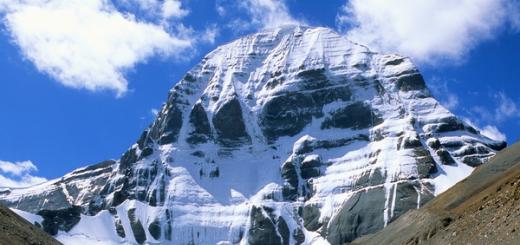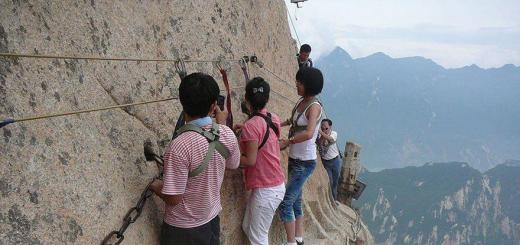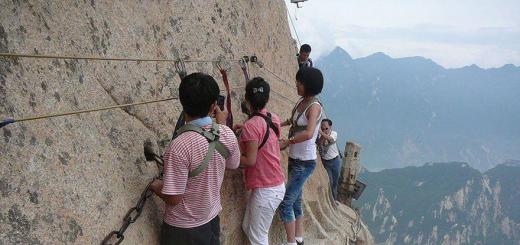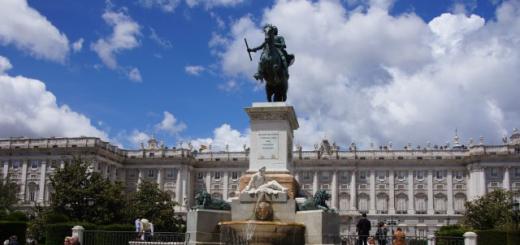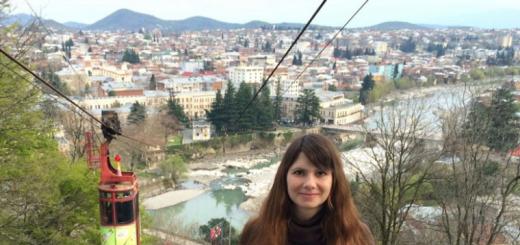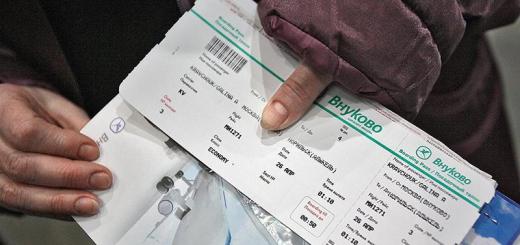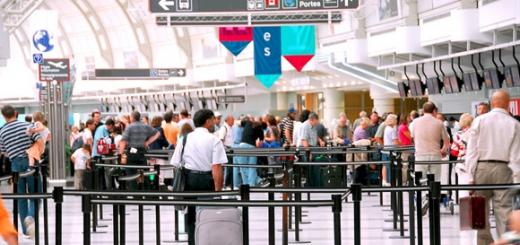Murmansk. Part 4, Abram Cape Deceptber 16th, 2015
Looking at the Kola Bay almost from the center of Murmansk - from the station, Schmidt Streets or a pedestrian crossing over the paths to the port, you can see exactly the opposite, on the other side, a small village, secluded on the hillside, and consisting literally from the pair of streets and several five-story buildings . At the shore of the bay in it is the former second ship repair plant. This Abram Cape is a separate settlement in the past, and now officially the outskirts of Murmansk. Since it is opposite, it means that it is interesting to see the panoramas of the city and the seaport.
When you look from the city, it seems that Abram Cape is now he is near. Just bay to cross. But in fact, getting into the village is not so easy - if I used to really regularly regularly walked the boats from the maritime station, then in 2013 they were exposed to "optimization" (in the worst sense of the word), and now you can get to Abram-Cape By bus number 24. The peculiarity of the situation is that the nearest bridge over the Kola Bay (I, by the way, showed in the previous part) is ten kilometers south of both the city center and the village of Abram Cape, so the bus makes a huge hook, almost having to cola, and Then returning back on another shore. As a result, it turned out that for a whole hour I was driving by bus, despite the fact that there are between the final points in a straight line two kilometers.
If on the previous day in the first half of the day the weather was consistently cloudy, and closer to the evening stably solar, then on this day the weather became in Murmansk, with a constant change of rain and the sun, much more often than in St. Petersburg. When I moved the bridge to the bus through the Kola Bay, the rain was lilated by a wall, like from the bucket, and there was no lumen. But in twenty minutes, when the bus brings me to the village, the sun shone, and only the wet asphalt and puddles were reminded of the rain.
2. Forest street - Central Abram-Cape Street. However, except for her in the village of Street only two - ship repair and hunting alley. Immediately after arrival, the feeling that I got into some kind of wilderness. In general, Abram Cape is perceived, - the deaf outskirts of Murmansk. Approximately as a canonerean island in St. Petersburg.
3. Stalin's school building. It seems one of the oldest buildings of the village.
Abram-Cape arose in the 1930s as a working settlement of ship repair plant No. 2. However, this plant did not survive the nineties and remained closed. In 2005, the plant for the production of oil and gas equipment appeared on its basis, but this company is clearly less than a ship repair plant, judging by the fact that the village still dies in a strong decline and looks crying. It seems that many residents of Abram Cape daily ride a job in the city.
4. Among the five-story buildings and several lacrimal houses there was one only in the village of a decade.
5. And five-storey houses are very typical for the Far North. Without balconies, with wide windows and painted in unusual colors. And just as typically for the north encouraged ... corrosive wall cladding not only a common decline in the village, but also a frequent Winter Northern Purga.
6. River with wooden bridge. Please note - the cows go on the shore! I wonder where they came from here at all, and where they graze them - on rocky hits and Festundra?
7. But in general, after arrival at Abram Cape I was attended by thought: "And where did it be listed?".
8. And so Abram-Cape looks from afar - from sopes on green cavity in Murmansk, where it is worth the memorial of the Great Patriotic War.
9. Literally a couple of quarters of houses, - Abram Cape is very small in the area (although about 2 thousand people live here). Step left, step to the right, and from the courtyards between the five-story buildings will go to the Festource.
"Don't you go for mushrooms?" Asked me in one of the courtyards. This is also part of the northern flavor - the wealth of nature under the side of the residential buildings. Collect mushrooms and berries in a pair of hundreds of meters from your yard - the usual thing for local residents!
10. This type of Abram-Cape opens on the Kola Bay. Now the Murmansk port and the city itself - on the other shore. Here, on Abram-Cape, surprisingly quiet, but the noise of port cranes from that shore is heard no worse than in the city.
11. And this is the appearance towards the city. Right ahead is visible to the coal terminal of the seaport.
12. At the edge of the village there is a military memorial dedicated to the 1st Corps of the Anti-Friend Defense, which during the Great Patriotic War defended the sky over Murmansk, and based on Abram-Cape. The pedestal is 85-mm anti-aircraft gun 52-k.
14. Here, on the memorial, another military equipment Air defense, including those who appeared already in the post-war era. Here, for example, anti-aircraft missile systems C-75 (left) and C-200 (right).
15. Fighters - Yak-3 (left) and SU-15 (right), then the S-100 "Neva" SPC and two SPCs from the previous picture.
16. That's it looks like the city:
17. After examining the Memorial, I went to the high bank of the Kola Bay. In the foreground, on the left, the already mentioned plant is visible, and on the other shore - Murmansk. Find in the landscape of the hill with Aleols - a sculpture of a soldier?
18. So he! It is perfectly visible from everywhere.
19. The general plan of Murmansk with Abram Cape looks like this. The sea facade of the city in the form of the port, in particular, the coal terminal, and behind it - the upper areas of the city with a multi-storey building.
20. View with approach. Here, perfectly visible in the second part of the temple of the Savior-on-waters, as well as to the right, the lighthouse at the memorial sailors who died in peacetime.
21. A view of a little left. The combination of white-gray high-rise buildings with hills covered with a forest tundra and a beghelem, constitutes Murmansk flavor.
22. Now I will transfer the view to the city center. Exactly in front of Abram-Cape is perfectly visible to the Marine Station (on the link photo near) and a pier who has an atomic icebreaker "Lenin", which is now observed from the stern.
23. Opposite view:
25. Sea Trade Port:
26. Ship-Repair Plant # 1 and, in the foreground, two icebreakers - left "Baltika", right "Captain Dranitsyn".
27. View B. southern direction. The characteristic two pipes of the Murmansk CHP, which I also have already shown in the previous parts.
28. And view north - in the direction of the open Barents Sea:
29. Under the legs - northern vegetation, which is an amazingly beautiful carpet of moss and herbs.
30. And above the head - amazing even in cloud weather North Polar Sky:
31. Around Latstundra:
The nature of Murmansk and its surroundings seems harsh, and the wind seems strong and cold. But I have not yet achieved the ultimate goal of my travel - open coast Barents Sea. Having visited Abram Cape, I sat on the reverse bus and went back to Murmansk. By the way, on the departure from Abram-Cape, I saw a passage of bikers with Yaroslavl numbers towards the trainer. After I returned to the city, I had to go to Teriberka in the evening - the final and climax of my June journey to the north. But before you start a story about Teriberka, I will show an atomic icebreaker "Lenin", which today is a museum.
Abram Cape - This is a microdistrict Murmansk Which is located on the opposite of the town of the Kola Bay. Accordingly, this isolation is reflected in the overall setting in this place. Among Murmanchansky, the area is famous primarily by the legendary DC where at one time various rock concerts ended, as a rule, sweatses with gopota; as well as a military memorial who is partially visible from another shore ...

From directly Murmansk through the Kola Bay, you can swim on a boat in a boat in 10 minutes or ride a battered hour in a bus ...
From directly Murmansk through the Kola Bay, you can swim on a boat in a boat in 10 minutes or ride a battered hour in a bus ...

During the low tide, the fjord looks gloomily ...
During the low tide, the fjord looks gloomily ...

On the Abram-Cape itself, there are also many gloomy paintings, that's just one example of devastation ...
On the Abram-Cape itself, there are also many gloomy paintings, that's just one example of devastation ...
This house of the baroque type just went to AD !!!

Military Memorial
Military Memorial




Defenders of the Soviet Polar region ...
Defenders of the Soviet Polar region ...


Ice watch
Ice watch

View of Murmansk: Port, station, "Arctic" ...
View of Murmansk: Port, station, "Arctic" ...
Memorial cemetery of Soviet Waughters in Murmansk initially was the burial site of those killed in Soviet-Finland . According to the compilers of the book "Soviet-Finnish War" P.V. Petrov and V.N. Stepakov, "In the Murmansk direction, unlike other sections of the Soviet-Finnish front, the bodies of the dead and dead soldiers were sent to the rear. In the war zone, this was engaged in the sanitary panels of divisional medicalbaths and hospitals. On cars, the corpses were delivered to Petsamo, from where transports were followed further to Murmansk ".


In accordance with the list of military personnel of the 15 armies buried at the fraternal cemetery in the city of Murmansk, who died and died during the war with Belofinnami. December 1939 - March 1940 " compiled shortly after the end of the winter war and signed by the head of the headquarters of the 19th Army by General Major B.A. Pigarevich, total in the Murmansk cemetery in 8 fraternal Mogilach 197 soldiers and officers were buried.
In accordance with the list of military personnel of the 15 armies buried at the fraternal cemetery in the city of Murmansk, who died and died during the war with Belofinnami. December 1939 - March 1940 " compiled shortly after the end of the winter war and signed by the head of the headquarters of the 19th Army by General Major B.A. Pigarevich, in total, in the Murmansk cemetery in 8 fraternal graves 197 soldiers and officers were buried.

Hero of the Soviet Union Politruk Rota Vladimir Dmitrievich Kapustinr, who distinguished in the bayonet attack near Pesma. Being twice wounded, he remained in the ranks until he died.
Hero of the Soviet Union Politruk Rota Vladimir Dmitrievich Kapustinr, who distinguished in the bayonet attack near Pesma. Being twice wounded, he remained in the ranks until he died.


In 1984, on the project of architect E. Emelyanov, a memorial wall was established at the military cemetery, indicating the soldiers buried here: in one part of the wall - those who died into the Soviet-Finnish war, to the other - in the Great Patriotic War. On the negligence lists and their compilers, the fact that on the memorial wall of the Murmansk Military cemetery is indicated only by 123 names from the official aforementioned list of military personnel who died in the winter war and buried at the Murmansk Military Cemetery. 42 of them, moreover, contain errors. So, for example, the Red Armyman Trofim Tokun is on the wall like "Kokun", and Voinfeldsher Ustinya Pavlovna Piyaro turned into "Piyar". And many such examples. And that the saddest, 74 names of the fighters of those killed in the Sevete-Finnish war and buried in the cemetery on memorial places are not mentioned at all.
During the Great Patriotic War, the memorial cemetery was buried mostly those soldiers who died in Murmansk hospitals from the Russian Academy of Sciences. According to some reports, during the war years, about 1,300 Soviet military servicemen found here ...

The grave of Anatoly Fedorovich Bredov - his dust moved here from the places of the battle after the vanine. The nonsense is especially reading in Murmansk, during Petsamo-Kirkenes operation he destroyed the last grenade surrounding his enemies and died himself.
The grave of Anatoly Fedorovich Bredov - his dust moved here from the places of the battle after the vanine. The nonsense is especially reading in Murmansk, during Petsamo-Kirkenes operation he destroyed the last grenade surrounding his enemies and died himself.

Fireman Military Murman
Fireman Military Murman
Information is taken from the book "Murmansk Necropolis", Authors - Pavel Fedorov and Alexander Sinitsky. I recommend this book to everyone who is interested in history Kola region.
Coordinates of the object:
Murmansk. Abram CapeAnd yet, summer we have!))) Yesterday, for example, it was a sunny, roast, green ... And Murmanchan can appreciate these wonderful days, especially since you never know whether the same weather will be the same Today, for example, rainy and overcast). So we went beyond the city, and not just - where the eyes look, but with the goal. And the goal was designated as follows: We will go to the shore, to the aircraft on Abram-Cape. "That shore" is the left bank of the Kola Bay, you can get there by a boat (but it rarely goes) or through the bridge (through it and drove). The plane is visible "from this shore", standing at a high location, we knew that there was a memorial complex, but there were never there. That went ...
Probably, it is necessary to explain the name - Abram-Cape - a combination, such a familiar for Murmanchan, whoever heard him who did not hear him from anyone's intention. By the way, I did not find an unequivocal answer in the literature. Flowing at the opinion of V. Muzhikova, the author of books and articles dedicated to the toponyms of Murman.
"In addition to the microdistrict and the cape, the names of the Abram-Pakhta, the Rocky Rocky Koly Bay coast of the Kola Bay, and a half kilometers south of Abram-Cape, and Abram-Tundra, elevation to the west of Abram-Pakhta. The same name had both Abram Corg, Oven in the Kola Bay in the midway, 171 meters from Abram-Pakhta. Currently, Corg is blown and removed, as it prevented the approach of ships to the fishing port.
All these names are known since the XVII century. True, in the documents of 1608-1611, "Abraham Pakhta" was written - so called the local sonya, but in the documents of the same time there is no Abraham among the owners of Tony. Artist of Polenov, communicating with local residents, I heard the legend about Varlaam (Abraham, Abrame) Keretsky - Kola priest, the times of John Grozny. The sheer rock is mentioned, which is the name of the Abram Pathel. "Oral legend," writes the Polenov in the book "Rating North," - changed the name of Varlaam or Abraham to Abram. "
And here we are on the beach ... Along the alley leading to the memorial complex dedicated to the 1st Cabinity of the Air Defense, which defended the sky of the Polar region during the Great Patriotic War, and there are aircraft (Yak-9 times of war, layout, and Su-15 , Modern) and missile installations.

Near Yaka - layout of aviation.


People near the Memorial are surprising quite a lot: specially arrived, like us, moms with children walk ...

On the pedestal - an anti-aircraft gun.

Stela with the names of fallen warriors ...

Monument to women - warriors air defense.

The memorial opens a beautiful view of the city and ships, standing at the pier: Red - this is an atomic icebreaker "Russia" in the dock, to the left - the first atomic icebreaker "Lenin", turned into a museum, even to the left, white, - the ship "Claudia Eleanskaya", Or simply "Klava", as Murmanchan called it (there is no disregard, on the contrary, something "home" is heard; here and the heavy aircraft cruiser "Admiral Kuznetsov" is called just "Kuzya")))

In the distance, a green cape, a monument to the defenders of the Polar region, Alyosha, as it is called.


And the peaceful sky above the head ... Here these familiar words acquire a special meaning.
I continue to lay out my impressions of acquaintance with the most large city Polaria, and today we will go to the famous Abram Cape, Place on the West Bank of the Kola Bay, where today there is a distant neighborhood of the city with the same name. There is also a memorial complex dedicated to the 1st air defense campaign that defended the sky of the Polar region during the Great Patriotic War. Like the famous "Alyosha", Abram Cape is considered a rather strong and sign commemorative dominant Murmansk.
The visit was held here as part of my scheduled trip along the western coast of the Kola Bay, on the conventional route "Murmansk - Polar", the day after visiting the Teriberis, and this route had to give me a lot of beautiful photos of the bay, Panorama of Murmansk and Severomorsk, as well as others Beauty ... However, everything went not quite as I wanted ...
The unexpected and sharp drop in the temperature of the air led to the fact that, from the morning, the impenetrable wall of the couple rose over the warm bay until the sky, leaving not only the bay himself, but everything around, within the radius of several hundred meters on both sides of him.
When we drove up to the Kola Bridge to move to the other side, the handsalers of the bridge as if there were no, and the entire transport stream, at a pedestrian speed, was immersed in a white substance and instantly dissolved in it.
02. In the evening, visibility on the bridge began a little better. The photo is done on the way back.

But, it was worth just to drive away from the bay and visibility again became normal. On both sides of the R-21 track "Cola", it was possible to admire very beautiful winter landscapes. And the most amazing views, highlighted by soft polar dawn, were opened, of course, from the height of the hills.
03. R-21 track "Cola".

About 10 kilometers, we got to the village of Urban Type Abram Cape, which today is considered the 8th microdistrict Murmansk. By the way, because of its isolated city, physically does not feel at all.
04. Polar dawn.

By local beliefs, this area has received many centuries ago. There is even a legend associated with the name of the priest of Arahami (Abram) and a feature that lived on the caulation and the fishing ships in the ocean.
Here, in 1920, not far from the mouth of the Varangian Creek, flowing into the Kola Bay, and the village arose with beautiful title "Varyzhsky Creek". The population was just a couple of dozen people. In the 30s, fishing workshops, a kind of ship repair plant No. 2, are actively developing here, the workers with their families move here, the population increases significantly and by the end of the decade is more than 300 people. And soon there is a change in the name to Abram Cape.
05. Northern nature.

Today in the neighborhood, consisting of only several streets, about 3,000 people live. There is all the necessary infrastructure: kindergarten, school, dk, hospital, shops, etc. Houses are ordinary Soviet five-story buildings and only one house has nine floors. With the city center of residents binds transport connection. Bus number 24 walks every hour, travel time is 50 minutes. They say, it used to be still comfortable and fast (only 10 minutes) crossing the boat, but then it was abolished.

From the route "Cola" in the village leads the central street of Forest. With it we turn on, cool to the top of the humps, hunting alley. It seems that it is unrealistic to drive ... ice, snow drifts and a very strong slope ... Togo and looked, the car will drop and rolled back ... But, we have successfully coped with this test and got to the memorial complex located on the top of the most beautiful park zone.

The first stage of the complex was opened in 1986, and the second in 1994. The outgoing distance, the snow-covered alley leads directly to the monument to the defenders of the sky of the sky, and the historical aircraft, gun and anti-aircraft air defense systems stand along it.
08. Airplanes on the pedestals: the famous single-engine fighter-bomber time of the Second World War - Yak-9 and the fighter-interceptor of the 60s - Su-15.

09. Yak-9. Somewhere nearby, under the snow, there must be a layout of aviation.

10. Before aircraft there is anti-aircraft missile complexes of the PVA S-125 S-125 Sprink (right in the photo), C-75 "Dvina / Pechora" and C-200 "Angara".

Probably, everyone is well known that Murmansk is a city-hero, which is often called second Stalingrad. During the war years, the city became a real northern an impregnable fortress, and the courage and the heroism of the defenders of the Polar region impressive! 185 thousand bombs were reset on Murmansk! Of the 2830 buildings available in the city, survived, in the ruined form, only 990. The city was practically erased from the face of the earth, but nevertheless survived and did not miss the enemy. The Germans lost about 100 thousand soldiers and officers in the plague, almost 2,000 aircraft, more than 800 combat and transport ships. For courage and perseverance, Murmansk was awarded the honorary title "City Hero" with the presentation of the Order of Lenin and the Medal "Golden Star".
11. PVC S-75 "Dvina / Pechora" (left) and C-200 "hangar" (right).

At the end of the alley there is a memorable memorial to the warriors of the 1st corps of the air defense and an 85-mm anti-aircraft gun 52-K. From this point, in good weather, a magnificent panoramic view of the Kola Bay and Murmansk himself, to the port and the sea station with atomic icebreaker "Lenin".
12. 85-mm Anti-aircraft gun 52-K.

In the distance, on the hill, a green cape, you can see the giant "Alesh" - the famous monument to the defenders of the Polar region.
People often come to Abram Cape to admire the ships, port cranes, listen to the screams of the chaps and the specific music of repair docks. In the vicinity of the village there are amazingly beautiful carpets from blueberries and blueberries, and the forests are rich in mushrooms.
The soaring bay crossed all my plans for panoramic views ... Instead of ships, port and Murmansk, I saw only white silence, started right behind the pedestal with an anti-aircraft gun. In the hope of at least something to see from the pier, we descended on the street. Shutter repairing to the berth, but they found only closed gates to the territory of Gazflot LLC. It was nothing more to catch here, and we went to the next point of our "surrealistic" route - Belokamena village. To be continued.
13. Couples over the bay

-----------------
Did you like my blog?
On the West Bank of the Kola Peninsula (practically opposite the Marine Station of the city of Murmansk) is one of its neighborhoods - Abram Cape (previously villages). It is located on the same name of the coast of the Kola Bay. Administrative is part of the May Day district of Murmansk. The article is devoted to this microdistrict, its attractions, nature, history and interesting facts. In addition, the article indicates how to get to the destination, as well as the bus schedule to Abram Cape.
Legend of the origin of the name "Abram"
In the vicinity of the city of Murmansk, several objects with names are found, which include the name Abram. Local old-timers explain this one ancient legend, which states that in the era of the board of King Ivan Grozny, in the 16th century, the priest lived on the Kola land, whose name was Arahami or Varlaam Keretsky, this name was transformed in Abram over time. And in the places of these, the most real features, he sat on the rock and no one of the living beings did not let go to the sea, that is, he scared the exit from the Kola lip to the ocean. He left him from his seat only when the priest of Varlaam was tempted.

At that moment, when the priest led the service, the features came to his house to his wife, taking the kind of lover. But one day came a black day for the unclean power - the wife of the priest died suddenly. Varlaam together with her body went on the boat past damn rockTo bury her. It was the only case when the hell missed a man by his cape and allowed him to go to the ocean. But when the priest returned to himself back to the temple, Besa and the next washed. Since then, the ocean is considered free in this place. It was the damn Cape Kolyan (the priest allegedly led the service in the church in the name of St. Nicholas in the city of Kola) called Abram Cape, in honor of the victory of good over evil. The people still called Varlaamamov.
Toponym "Abram" in these parts
It should be noted that in addition to the Ambram Cape of the Romantic Land of the Earth, the same name is the same name of Murmansk microdistrict.
Toponym "Abram" is quite widespread in these places. In addition to the district itself, the Cape, the name of the priest, who allegedly lived in these places is present to toponym in the name of the rocky picturesque shore, and falling down in the water of the Kola Bay - Abram-Pathel.
There are exaltivity here, which is located near the rocky shore, which is called Abram Tundra.

Abram-Cuga also existed, so called the shallow, which blew up, as she prevented the courts.
All of these names are known from the 17th century, they are found in official documents of 1609, although it is estimated that there were no abraham among local landowners.
The history of the emergence of the neighborhood
Once it was at the site of the microdistrict Abram-Cape the village, which, according to some reports, was founded in 1926 and was called the Varangian Creek. He received the name from the stream, flowing into the Kola Bay, not far from the mouth, from which it is located locality. It was a small village, in which, according to statistical data, about 2 dozen people lived. In the 30s, the water intake was built here in order to be able to refuel the vessel and towing.
In 1937, ship repair docks are moved here, and the settlement is renamed Abram Cape. We moved here and families workers, and the population of the village increased. By the end of the 30s, it accounted for more than 300 people.
It should be noted that ship repair plant No. 2 was created here, but he did not survive the 90th and remained closed and unclaimed, but on the basis of it in 2005 the plant for the production of oil and gas equipment arose. The company is currently not economically forming in the microdistrict, so many residents ride work in other areas of Murmansk.
Microdistricon description
If you look at from the station or from the city center, on the contrary, on the other side, you can see a small microdistrict, which is secluded on the hillside - this is Abram Cape. In the past, a separate settlement currently is the city microdistrict.

Nowadays, about 3 thousand people live in the Murmansk microdistrict - Abram Cape lives about 3 thousand people. It consists of several streets, but here there is all the necessary infrastructure: kindergarten, school, culture house, shops, hospital. The houses here are typical five-story buildings, and only one of them is nine-story. All of them are built in Soviet times and have a typical architecture for that time.
With the outside world of residents of the microdistrict binds transport links. Go to Abram-Cape bus from Murmansk.
How to get
When you look from the city to Abram Cape, it seems very close. But, in fact, getting into the neighborhood is not so easy. Until 2013, boats regularly went there, but then they were abolished, so you can get to the microdistan by bus. Abram Cape follows 24 and 111 routes. The complexity of the situation is that the nearest bridge over the Kola lip is located 9 kilometers from both the center of the city and from the neighborhood, but the bus makes a huge hook, almost donates to Cola, after which it returns back on another bank. As a result, to get to the microdistrict, it is necessary to carry out about an hour of time (between the end items just a few kilometers, if directly).
Bus number 24 leaves from the city center, Bus No. 111 departs from the bus station to Abram Cape. Schedule them: 6:30, 11: 0, 14:50, 19:50.
Memorial Complex Defenders of Polaria
On the outskirts of the neighborhood there is a military memorial complex. It is devoted to the 1st Corps of the Air Defense Forces, who defended Murmansk from German aviation airlinals. The air defense body was posted on Abram-Cape.

Everyone is well aware that Murmansk is a hero city, which is called second Stalingrad. During the war years, the city was a real northern-crime fortress, the courage and heroism of his defenders is impressive. The Germans tried in every way to break through to the Murmansk port, and when they did not succeed, they tried to break his work with the help of airbabs. More than 185 thousand bombs were reset on the city. Of the 2830 buildings survived, and then in the form of Ruin, 990. There were more than 1000 raids, for each inhabitant of the city there were more than 30 explosive and more than 70 incendiary bombs.
The city was practically erased from the face of the earth, but he survived and missed the enemy. Murmansk would have burned down, if it were not for the work of the 1st air defense body, in which they served mainly girls. The Germans met tough resistance from our air defense. They lost about 100 thousand officers and soldiers here, almost 2 thousand aircraft, more than 800 transport and combat vessels. Then, many of our fighters died, in memory of them, about their courage, heroism, the sacrifice was created by this memorial complex. For durability, courage and courage Murmansk was awarded the honorary title "City Hero".
An 85-mm anti-aircraft gun "52-K" is installed on the pedestal. Another military technique of anti-air defense is also exhibited, including those who have appeared in the post-war, for example, for example, "C-75", "C-200".
The first part of the military complex was opened in 1986, the second in the 1994th. Memorial Alley leads to the monument to the defenders of the sky of the sky. From here S. observation deck opens great view On the Kola Bay and the city, as well as to the port and the sea station.
Away on the hill Green Cape You can see a gigantic monument to the defenders of the Polar region - "Alesha".
Microdistricular streets

The microdistrict Abram-Cape is small, its central street is called Forest, besides her there are two more: ship repair and hunting alley. It should be borne in mind that this is not a modern microdistrict with new buildings, but a former village that was attached to the city in an administrative plan. He fully complies with his former status, in its essence he is the outskirts of the city.
He really does not differ from other districts of Murmansk, the only difference is that it is isolated and located on the slopes of the gorge formed by the Varangian stream.
Nature of the neighborhood, tourist reviews
People often come to Abram Cape to admire the scenery, port, ships, listen to the screams of chaps, the sounds of nature. In the surrounding area you can find amazing carpets from blueberries and blueberries. This place is very loved by the mushrooms that come here from the city and arrange real fungal hunting competitions. According to tourists, it is very cozy here, quietly, nature is simply amazing.

From the neighborhood there is a magnificent panoramic view of the city, so many attend this place to admire not only the beauty of nature, but also the city.
Video and photography lovers also come from the city to Abram Cape. Photo of landscape and nature, amazing beauty of the bay and cities are really impressive. Many say that they get here solely for the sake of unique personnel.
I am striking the beauty of these places. There is a huge number of shrubs and herbs: a lingonberry, a richness, water and blueberries. Pines, spruce and birch are growing here. Someone in the undergrowth can be found rowan. The forest is rich in mushrooms: brewer, boosainry, raw materials, waves.
Polar Lights - Sightseeing of Natural Character
But attracts tourists here another amazing a natural phenomenon - Polar Lights.

This is truly driven by its beauty, the sacrament and magnificence of the phenomenon of nature. From this microdistrict Murmansk, many tourists make beautiful photos This phenomenon. The pictures are very beautiful, but the observation of the game of radiance is an even more impressive spectacle - it is a true aesthetic pleasure.

